December 15, 2022
Welcome back. Today in Microsoft Flight Sim, I’ll be flying the twin-engine Lockheed P-38 Lightning, one of the fastest and most successful American fighters of World War II.

n the process, I’ll be telling the story of Dick Bong, a P-38 pilot in the Pacific who became the top-scoring American fighter ace of all time. Because this is his plane.

The P-38 was designed in response to a 1937 US Army Air Corps request for an “interceptor” that could fly higher and faster than enemy aircraft.

Lockheed’s design team was led by Hall Hibbard and “Kelly” Johnson. I wrote about their work on the Model 10 Electra airliner in my previous post.

The P-38 incorporates Kelly’s preference for twin-tailfin designs, which started with the Model 10 Electra.
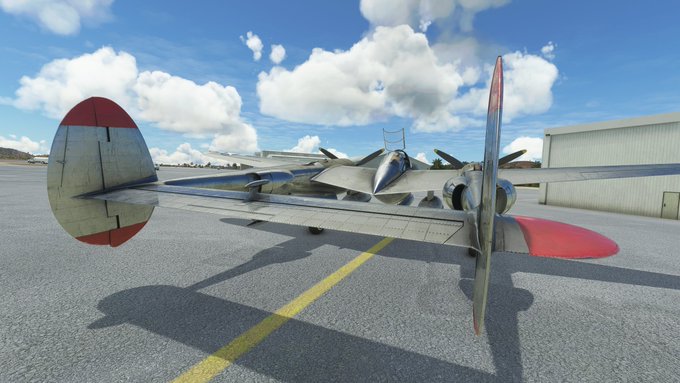
The team quickly realized that to reach the speeds requested, the P-38 would need two engines: in the case of the L model here, each producing a stunning 1,600 horsepower.

Behind each is a turbosupercharger, a kind of oxygen mask for the engine, boosting the air pressure flowing into the engine’s combustion chambers to produce high performance at very high altitudes.

And behind that, a special radiator to release heat from the special liquid coolant chemicals needed to keep such powerful engines from overheating.

I’ll talk about the armament later, but one quick note, because it’s easier to see from the ground: special dive flaps that open under the wings to keep the P-38 from losing control in a high-speed dive.

Unlike most WW2 aircraft, the P-38 wasn’t a taildragger. It has tricycle-style landing gear, resting forward on a nosewheel.
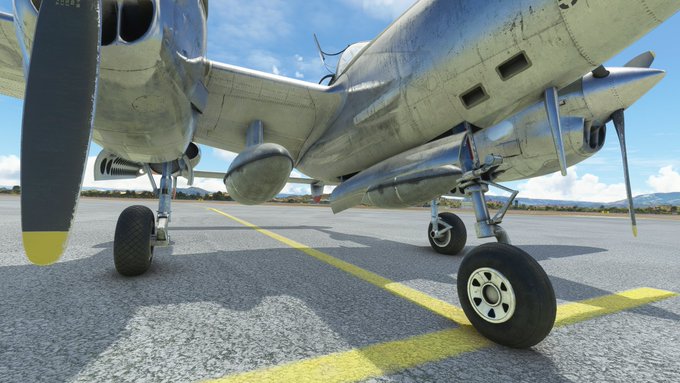
The cockpit of the P-38 is pretty straightforward: power controls on the left, flap lever on the right. Unlike most WW2 fighters, however, it has a yoke, not a stick.

The engines are all fired up and I’ve taxied to the runway here at Port Morseby, Papua New Guinea.

Because the P-38 is a twin-engine, with counter-rotating blades, unlike a single-engine fighter there’s no real tendency to veer to the left when taking off, which makes the Corsair or Spitfire so difficult to handle.

There’s very little trace left of the WW2 Allied airstrips around Port Moresby, so I had to take off from the modern airport.

A little bit of historical context here: in early 1942, Port Moresby was one of the few Allied outposts in the South Pacific that hadn’t been invaded and overrun by the Japanese. New Guinea was the last obstacle standing in the way of Japan from invading Australia.

The Battle of the Coral Sea, in May 1942, prevented a Japanese invasion fleet from reaching Port Moresby, but it was a costly victory and offered only a temporary reprieve.
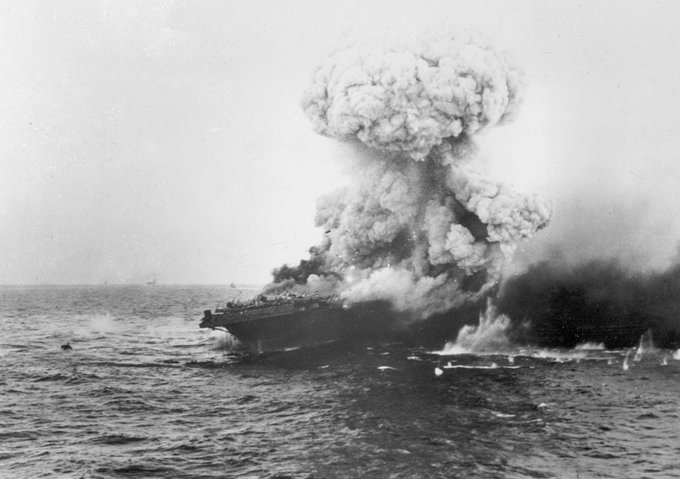
Dick Bong was a farm boy from Wisconsin. He joined the Army Air Corps in May 1941 at the age of 20. One of his early flight instructors at Luke Field, Arizona was (later Senator) Barry Goldwater, who called him “a very bright student.”

I have to turn on my oxygen here, because I’m gaining altitude rapidly, and the instruction manual says that if you go above 12,000 feet in the P-38 without oxygen, the sim might make you “black out”.
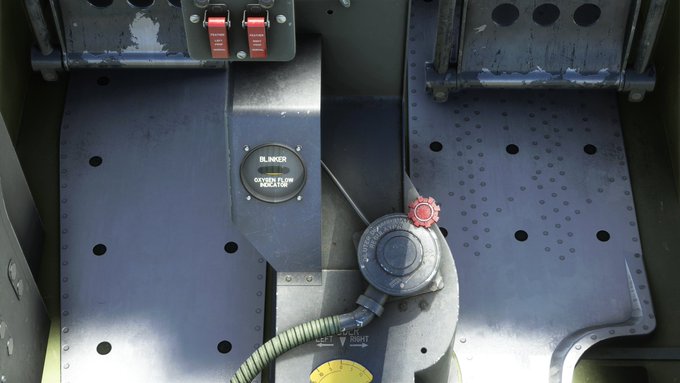
Anyway, Bong was then sent to San Francisco to train to fly the P-38. While he was there, he got in some trouble.

Bong flew his P-38 at low level down Market Street in San Francisco, buzzed a pilot friend’s house, and blew the clothes off of a woman’s clothesline in Oakland, receiving an official reprimand.

Bong is also rumored to have flown a loop around the Golden Gate Bridge, though he later denied this.

General George C. Kenney admonished him: “If you didn’t want to fly down Market Street, I wouldn’t have you in my Air Force, but you are not to do it any more and I mean what I say.” But Kenney, who went on to command US Army air power in the South Pacific, was impressed.

I’m approaching 20,000 feet here, heading over the mountains into the combat zone along the north coast of New Guinea, where Bong scored his first kills.
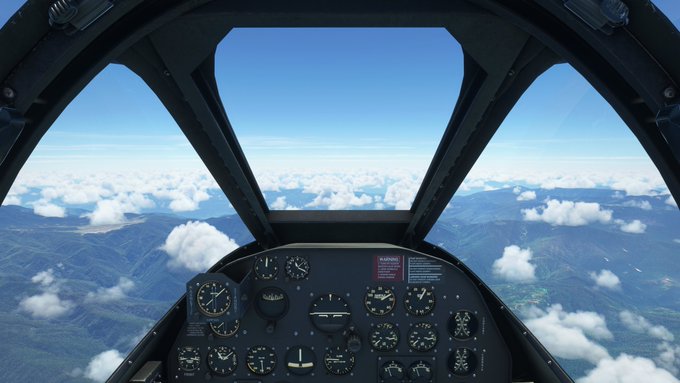
Mount Victoria, in the Owen Stanley Range which serves as the spine of New Guinea, rises to 13,248 feet.

Japanese forces struggled to launch an overland attack on Port Moresby over these mountains, along the Kokoda Trail, but were halted by US and Australian troops in horrendously difficult jungle fighting.
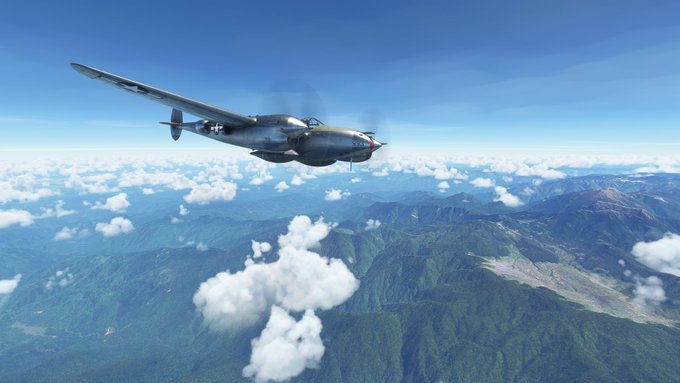
At that time, Bong was sent to northern Australia and later Port Moresby, originally flying P-40 Warhawks. He qualified as an ace, shooting down five Japanese planes, in a matter of weeks.

Soon Bong was reassigned to a unit, in the same theater, that had P-38s. He never looked back.

Dick Bong in his P-38.

Early on in the war, in North Africa, the P-38 gained a poor reputation as a dogfighter, and was seen by German pilots as an easy kill.

A major reason is that early P-38 pilots were utilizing conventional turning dogfight tactics, instead of using its faster speed and higher altitude to make single diving passes, then speed away from harm before turning to make another lightning pass.

As a result, P-38s were initially employed in Europe mainly for high-altitude photo reconnaissance, ignoring their true potential.

One major problem, early on, was that the P-38 tended to lose elevator control in a dive – the very tactic that gave it the most combat advantage – making it impossible to pull out. Many pilots were killed as a result of this flaw.

The solution was to install dive flaps, which you can again see deployed here. They don’t slow the plane as much as help it pitch up and pull out of the dive.

I’ve descended over 10,000 feet in this dive in less than a minute.

But it was across the vast distances of the Pacific Theater that the advantages of the P-38 – not just its speed and altitude, but its very long range (1,200 miles on combat missions) – really began to shine.

It was a bit north of New Guinea, over the island of Bougainville, that in April 1943 the P-38 performed its most famous mission: shooting down the plane carrying Japanese Admiral Isoroku Yamamoto, the prime architect of the attack on Pearl Harbor.

Only the P-38 could perform the top secret mission, because of its attack speed and the long range required to fly from Henderson Field on Guadalcanal.

If you’re interested in learning more about this mission, here’s a good book on it:
Meanwhile, Dick Bong continued to escort bomber raids against Japanese forces on the north coast of New Guinea, and shoot down more enemy planes.

The P-38 was armed with 4 50-cal 4 M2 Browning machine guns in its nose, as well as one Hispano M2(C) 20 mm cannon with 150 explosive rounds.

Unlike fighters which had guns emplaced on their wings, calibrated to converge at a certain range, the pilot of a P-38 could shoot straight on, and be accurate at any range.

Bong always claimed that his marksmanship was poor, which was why he scored so many of his kills from close range.

With improved tactics and dive stability, the P-38 soon won newfound respect from its opponents. The Japanese nicknamed it “two planes, one pilot”.

The Germans, who had earlier disdained the P-38, now dubbed it “der Gabelschwanz-Teufel” (the fork-tailed devil).

I’m approaching Lae, an important Japanese base and US bombing target on the north coast of New Guinea, where Bong scored several of his kills.

Lae was founded as Lutheran mission by German colonists in 1886, and was later surrendered to the British after World War I.

You can see the outlines of Lae’s old airstrip directly below me. Before World War 2, it was most famous as Amelia Earhart’s final departure point, before she was lost over the Pacific.

Lae and the numerous Japanese airstrips that surrounded it were the target of repeated US bombing raids, escorted by P-38 Lightnings.

Just past Lae, I’m following the Markham River inland to land at the airport at Nadzab.

In September 1943, Allied forces identified this grassy plain as an ideal spot to land a parachute assault, in coordination with an amphibious assault from the sea to capture Lae from the Japanese.

The American paratroopers dropped over Nadzab, the tiny airstrip for another nearby mission, and began preparing it immediately to serve as an airbase.

General MacArthur himself orbited overhead in a B-17 bomber as the paratroopers descended on Nadzab.

Nadzab soon became a major forward airbase for the US and Australian air forces, and continues to serve as Lae’s main airport today.

Coming in for a landing at Nadzab. The target approach speed for the P-38 is around 120 knots.



In November 1943, soon after the capture of Lae, Dick Bong returned to the US on leave. He met Marjorie Vattendahl at a college homecoming event and began dating her.

On his return to New Guinea, he had her portrait painted on his P-38, now dubbed “Marge”.

Soon after his return, in early 1944, Bong scored his 26th and 27th kill on a single day over the Bismarck Sea, just north of Lae, tying and surpassing Eddie Rickenbacker’s American fighter ace record in World War I.

Richard Bong and “Marge”, probably at Lae in early 1944.

Bong was a famous war hero at this point, and he returned home to the US to go on a cross-country tour to help sell war bonds.

Before leaving New Guinea, though, I should mention the role that Charles Lindbergh played as a civilian advisor in New Guinea, helped to teach P-38 pilots how to extend the range of their aircraft even further.

It didn’t take Dick Bong long to return to the front lines, this time here in the Philippines, where he flew a new P-38 dubbed the “Down Beat”.

Bong initially flew from here at Tacloban, on Leyte, where General MacArthur landed in October 1944 and declared “I have returned”.
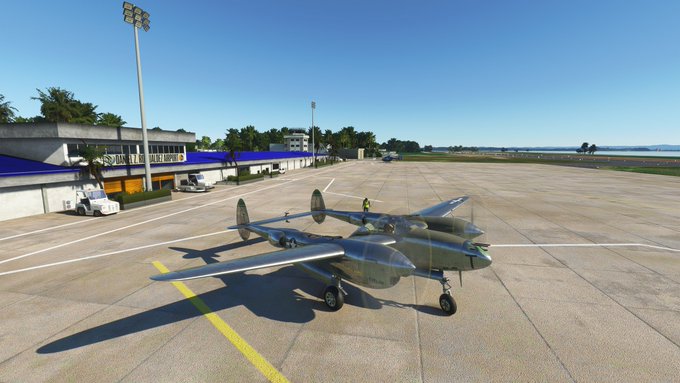
Officially, Bong was assigned as a gunnery instructor, allowed to accompany pilots on missions but no engage in combat himself.

Yet somehow Bong kept racking up kills, for a total of 40 before the war’s end.

In December 1944, Bong received the Medal of Honor from General MacArthur personally, in recognition for his accomplishments as America’s “Ace of Aces”.

The P-38 Lightning downed over 1,800 Japanese aircraft, with more than 100 of its pilots becoming aces.

That deserves a loop.




And a roll.




Looks like I’ve pushed my engines too hard because I’m trailing smoke.

It’s an interesting feature, along with blacking out at high altitudes if you forget to turn on your oxygen.

Reducing power seems to solve the problem, before the engines cut out. In any case, it’s time to land.

Bong returned to the US where he married Marge in February 1945.

He began a career as a test pilot for the new jet fighters being developed, including the Lockheed P-80 Shooting Star.

On August 6, 1945, the P-80 jet Dick Bong was test-flying exploded in midair. He was just 24 years ago. The news of Bong’s death shared top headlines with the first atomic bomb dropped on Japan, the same day.

The P-38 was the first fighter plane to fly faster than 400 miles per hour.

It was the only American fighter airplane in production throughout the entire US involvement in WW2, from Pearl Harbor to V-J Day.
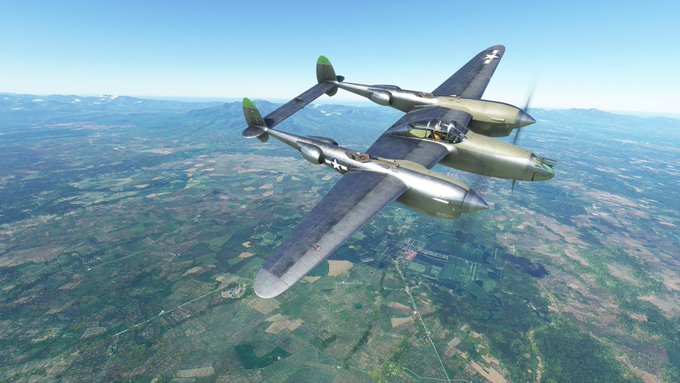
Over 10,000 P-38 Lightnings were produced. Only 26 survive today, of which 10 are still flying.

So let’s make sure I don’t crash this one …




Goodbye for now, from Leyte. Hope you enjoyed the thread on the P-38 Lightning and America’s top ace, Dick Bong.

And yes, that’s a DC-6 behind me. A hint at future threads to come.

Leave a Reply